Icheon's Ambitious Plans
Mayor Cho Byung-don talks about the city's diverse projects to turn it into a cultural, artistic hub with modern amenities
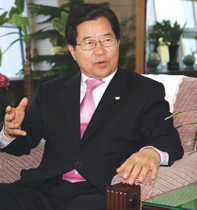 In this exclusive interview with NewsWorld, Mayor Cho Byung-don discusses Icheon's projects to make itself a burgeoning town with modern infrastructure and a home to various cultural festivals starting with the World Ceramic Festival and others rooted in various indigenous traditions. Mayor Cho plans to prepare the city to house up to 330,000 residents by 2020 with modern amenities.
In this exclusive interview with NewsWorld, Mayor Cho Byung-don discusses Icheon's projects to make itself a burgeoning town with modern infrastructure and a home to various cultural festivals starting with the World Ceramic Festival and others rooted in various indigenous traditions. Mayor Cho plans to prepare the city to house up to 330,000 residents by 2020 with modern amenities.
Question: The development of the modern city incurs side effects from rapid industrial and economic expansion. Icheon City has been widely known for its beautiful scenery and clean air. Please tell our readers about your plan to keep those natural surroundings and at the same time make well-known spots and historic sites in and around Icheon tourist destinations for the city's residents and visitors?
Answer: The Ministry of Land, Transport and Maritime Affairs will approve the plan to allow the city's population to expand to 330,000 by 2020 and build and operate a light electric train line by 2012, which will cut the travel time to the Gangnam district in Seoul from Icheon to 40 minutes. Icheon will also try to attract about 122 businesses to the city. Lately, culture has become a root power for our lives and, at the same time, a growth engine for national development and thus a core competitive force for a nation. The world has rapidly changed to one in which culture and arts are stressed very much over the society of knowledge and information, full of a creative core power, which is sensitivity.
At the center of every municipal development plan is a cultural concern to stress a "cultural city" in its plans, making the cultural element a tremendously important factor in city planning around the world.
Icheon, despite its proximity to the Seoul area, has been excluded from the benefits of Seoul's politics, economy and culture. In order to cover this shortfall, we have been trying to make Icheon a mid-sized independent city by stressing a new paradigm for city development. The declaration "Icheon, Cultural City" was made in March to make the city a tailor-made futuristic town model with the concentration of growth power on culture.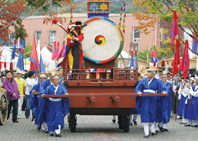
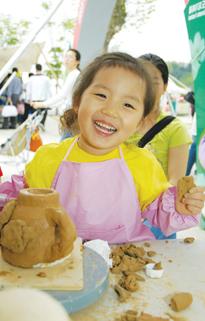
The city is trying to get a designation from UNESCO for its "creative network," just like many cities around the world that use culture as a new growth engine for economic development. Icheon is already in the process of strengthening its competitive power by joining the creative network as the first among local autonomous entities in the area of ceramics.
Icheon has also been trying to develop various cultural tourism resources to take advantage of its natural surroundings, in addition to what it already has, such as pottery making, hot springs and more.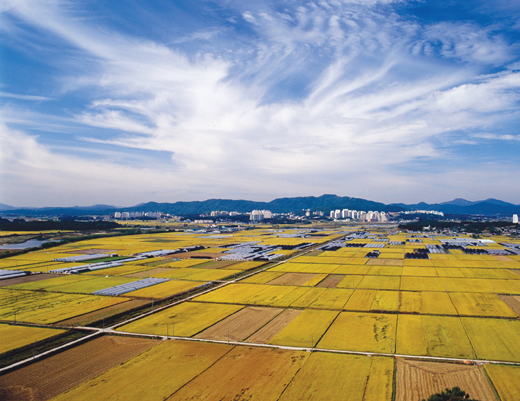
The origins of the ceramic industry in Icheon trace back 1,000 years. It was introduced in the city during the Joseon Dynasty era from Bunwon-ri, Namjong County in Gyeonggi Province. Now, there are 2,400 kilns operating in and around the city. The talent that goes into each ceramic piece made in Icheon was displayed at the successful Icheon World Ceramic Biennale this year.
As a result of the biennale, Icheon has been able to create tie-ups with a number of cities in Japan, China and elsewhere in the area of pottery-making including Setogoka City and Arita City in Japan, two cities in China and a number of cities in Germany.
Icheon is taking advantage of its accessibility from large cities by building a number of tourist facilities such as a ceramic art town, farm theme parks, a children's park, a floral village and others related to farm towns to ultimately build a base for cultural tourism in Icheon. Icheon will try to upgrade its image as a representative cultural town, making good use of the Icheon Art Hall, the only such art facility in southeastern Gyeonggi Province, along with the Municipal Woljon Fine Arts Hall, the only one in Gyeonggi Province. The International Sculpture Symposium and the Icheon Chunsa Screen Festival also will be used to upgrade the city's image as a cultural tourism town.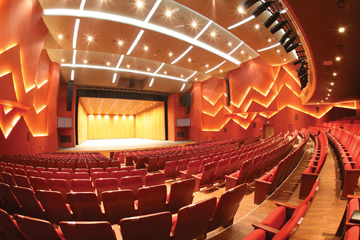
Q: How large is the farm population in Icheon and the farms' scale? What is Icheon's plan to continue to develop its farming enterprises in the future?
A: The city's farming households numbered 8,742 in 2008 with 26,663 people actively engaged in farming and 1.98 ha of farmland per household. They account for 13.5 percent of the total population of Icheon. Icheon has a total of 17,332 ha of farmland, with 7,532 ha for rice paddies and 9,800 ha of fields. To make the farms more productive, the city has been employing various measures in such areas as systems, quality, technology, marketing and facilities, both in hardware and software, all geared to help local farmers catch up with farmers in advanced countries. Such efforts by the city have been based on the idea that the development of farms and farm towns are possible only when city and farm villages can co-exist and cooperate. Icheon has been working hard to build a farm experience tourism network and vitalize city and farm education programs. The city's future farm policies will focus on a sustainable farm development model linked with the region's natural resources. Icheon has been picked as a nature preservation sphere city under the Capital Area Realignment Law and has obtained the pollution exposure volume for May from the Ministry of Land, Transport and Maritime Affairs.
Q: Can you tell us Icheon's development plans and the projects being pushed by your office?
A: There are many projects to be carried out by the city including the construction of a double line for an electric car line between Seongnam, Icheon and Yeoju, Gyeonggi Province, the development of stations along the line and the development of the Majang area when military units are evacuated. A total of 500,000 pyeong for the electric line station areas need to be developed and the all-pollution volume system is an unavoidable matter in building a mini-administrative town or new city. In May, we got approval from the government on Icheon's all-pollution volume application, which will allow us to build a town with a population of 30,000 by 2012, along with the development of train stations in Icheon, Bubal, and Shindun.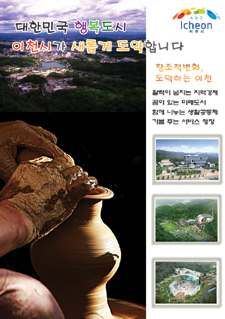
The Defense Ministry's evacuations of the Special Warfare Command and the 3rd Airborne Brigade from the areas they used to occupy will be completed by 2012 and the reimbursement of land has been complete up to 84 percent. We got the promise of support for the projects from the defense ministry, which will be kicked off in May 2010 and completed in 2012, provided that all administrative processes are completed. In addition, Icheon is in the process of building 10 small industrial complexes under the Capital Area Realignment Law by 2012. It is Icheon's niche project to supply land for industrial sites to revive the economies of local regions and turn itself into a nice residential city.
We succeeded in convincing Hynix to scrap its relocation plan, thanks to the revision of laws on the maximum allowance of exhaust fumes from copper refineries. As a result, the Korea Chamber of Commerce and Industry and the National Competition Strengthening Committee on July 29 had the Regulatory Reform Promotion Team announce its decision that plant sites along the upper sides of water reservoirs will be allowed so long as they don't pollute the reservoirs. We believe we will soon have good results when the standard on emission levels is prepared.
Besides, we expect to obtain from the Ministry of Land, Transport and Maritime Affairs a permit to build roads for bicycles along the 3rd Electric Train Line's Dongwon University and Hynix section and the project will start next month. We will also kick off the projects to build a hot spring park in the center of the city, the Democracy Park and the Icheon Agriculture Theme Park.
The Dongbu Wider Area Resources Recovery facilities, the Icheon Art Hall and the Integrated Welfare Town have all been completed and are open to the public.
Q: Can you tell us something about the Icheon Ceramic Festival and the Icheon Rice Culture Festival?
A: When you talk about festivals in Icheon, you cannot avoid mentioning the ceramic festival, the oldest and most popular of Icheon's cultural festivals due to its age-old tradition, and the Rice Culture Festival, which was named the most excellent cultural festival by the Ministry of Culture, Sports and Tourism. The festival is open to the public as participants as it displays our country's agricultural culture through plays and dances with an exhibition space where anybody can participate and be part of the festival.
Some 1.55 million people visited the 5th Gyeonggi Province World Ceramic Biennale 2009 and the 23rd Icheon Ceramic Festival with astounding economic effects of 330 billion won. Besides, Icheon has other festivals including a flower festival, a peach festival, a cinema festival, an international sculpture festival, Solbong-san star light festival and others, all of them large festivals through the four seasons every year.
Q: Can you tell us about Icheon's municipal policies, especially on a plan to make Icheon an education city?
A: The English Village that opened last year has been able to cut construction costs, as it was able to use the educational facilities of the UNESCO Korea Committee and cut operation expenses also by hiring excellent manpower. It has been getting very good reactions from parents of the students because of its outstanding curricula that is different from other similar institutions in the country.
In 2011, we plan to open a special purpose high school and are in the process of having the Gyeonggi Education Institute set up a facility in Changho-won. nw
Mayor of Icheon Cho Byung-don speaks about the city's ambitious plans to develop itself further to be known as a cultural and artistic hub in Korea.
(Photos from above) A recreation of an ancient tradition of the festival including a march of military soldiers during the Joseon Dynasty; Children enjoy playing around at one of Icheon's numerous festivals; A view of Icheon's open field including rice paddies, known for its good taste in the country; An inside view of the Icheon Culture Hall in Icheon.
3Fl, 292-47, Shindang 6-dong, Chung-gu, Seoul, Korea 100-456
Tel : 82-2-2235-6114 / Fax : 82-2-2235-0799